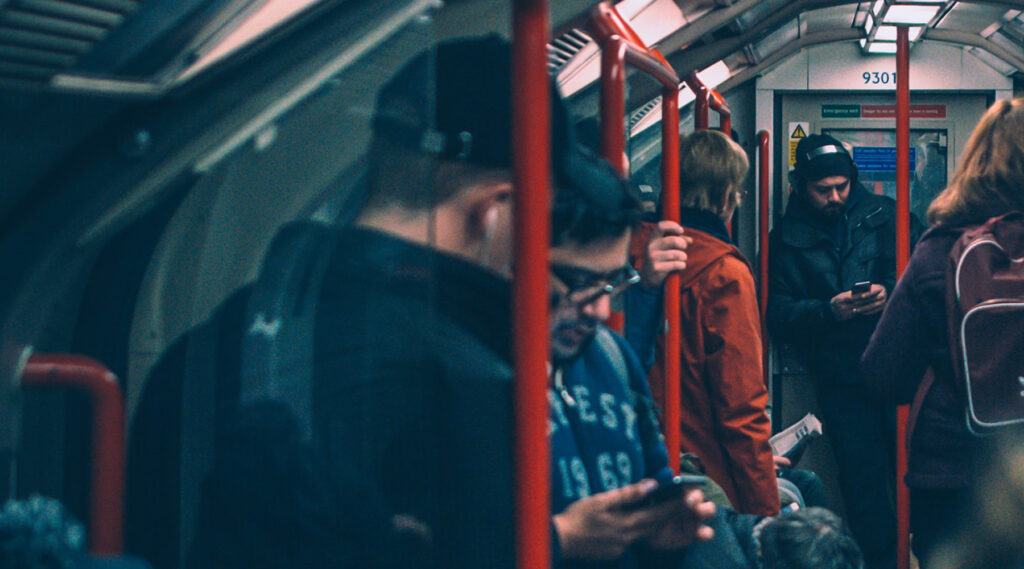Two sections of the London Underground have been upgraded to offer 5G mobile phone coverage as part of the ongoing rollout of mobile coverage in the tube. The Central line between Holland Park to Queensway and the Nothern line between Archway to Kentish Town switched on mobile phone coverage at the end of December, offering 3G and 4G coverage.
This week, those two sections also switched on 5G coverage from both Vodafone and EE networks. Coverage is in the ticket halls and platforms, as well as in tunnels between those stations.
The upgrade to 5G is part of the planned deployment of phone coverage, and reflects the reality that the majority of smartphone users on the tube are expected to be staring at their screens, not trying to make phone calls.
The 5G coverage will work in tandem with the station’s existing Wi-Fi service, although Vodafone controversially switched off Wi-Fi coverage on the tube in June 2021, leaving its customers without any service in tube stations. The Wi-Fi network, which was originally installed by Virgin Media will be transferred to BAI to operate on behalf of TfL from this April.
The mobile phone coverage, which already exists on the Jubilee line between Westminster and Canning Town is being expanded to the rest of the London Underground network, and final testing is underway at some of central London’s busiest tube stations, including Camden Town, Oxford Circus and Tottenham Court Road, to enable them to start offering mobile coverage shortly.
The aim is to deliver full coverage on the Underground and Elizabeth line by the end of 2024.
The delivery of mobile phone coverage on the London Underground was signed via a concession agreement so that the cost of installing it will be funded by BAI Communications at no cost to TfL, while TfL will also earn revenue from the contract over its 20-year lifespan.
Although the London Underground lags behind other countries in offering mobile phone coverage in the tunnels, it is one of the first in the world to start offering 5G coverage.
BAI’s network will also host the Home Office’s Emergency Services Network (ESN), which will replace the existing Airwave system currently used by London’s emergency response teams.
Across the wider Connected London programme, BAI anticipates investing more than £1 billion in establishing a backbone of mobile and digital connectivity for London. A full-fibre network will also be delivered that will connect to buildings and street assets, like traffic lights and lampposts that house small mobile transmitter cells to improve 4G and 5G phone coverage.








So when we are rushing for a Tube train to get to work in the morning we’ll find ourselves stuck behind some zombie dawdling along the corridor, peering at their phone screen like no one else matters. I look forward to it.
Like there aren’t any dawdlers already.
…er well they’ll already have been doing that for years given WiFi has been available for god knows how long so you won’t see any change.
I’m on O2 and haven’t received any coverage (even 4G) between Holland Park and Queensway yet. The Jubilee has worked since launch however.
I’m disappointed they didn’t think to include the two under-river sections of the DLR in their rollout. Having no coverage between King George V to Woolwich and Island Gardens to Greenwich.
Surely TfL would want to do this bit first for a “public safety” point of view?
Where have you read that they won’t be including that in the coverage plans?
How does TfL earn revenue from it? Some sort of data sharing?
About time too. We’ve had 100% coverage in the MTR since soon after mobiles were a thing. “Leaky cable” installation shared by networks. Cheap to install, too. Everybody pays about GBP1.20 per month surcharged on their mobile bill, as a “tunnel licence fee”. Probably way outstrips what the carriers pay the MTR.
Still seems bizarre to me that the Elizabeth Line didn’t have 5G from day one.
I think the tunnels were too busy with people trying to deliver the railway and get it open?
£1 billion investment? Surely that could be put towards better practical upgrades. Are we really at a point as a society where we can’t be disconnected from our phones for a short time?
It’s very unlikely that the mobile phone companies would have any interest in spending a billion Pounds on the station upgrades at Camden and Holborn (for example) instead of rolling out network coverage across the network.
Did you read the article?
Ian even wrote this!
“ … the cost of installing it will be funded by BAI Communications at no cost to TfL …”
Oh great, a tube full of phone zombies. May as well emigrate now.
As ChrisC says above, there are already dawdlers, not to mention people blocking the platform entrances.
Wonderful, I can hear overly loud conversations and shitty sounding music underground now as well.
That’s not been a problem on the Jubilee line extension which has had phone coverage for a couple of years — what’s so different about the Central and/or Nothern lines that it would be an issue?
3G isn’t going to be around for that much longer, so they had to get on with 5G. (If the networks wanted to nudge their customers off 3G they might not have bothered, offering only G and now 5G)